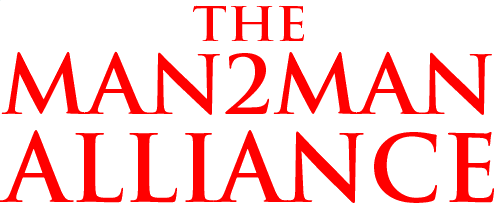


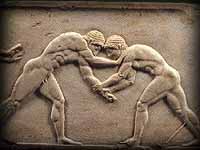

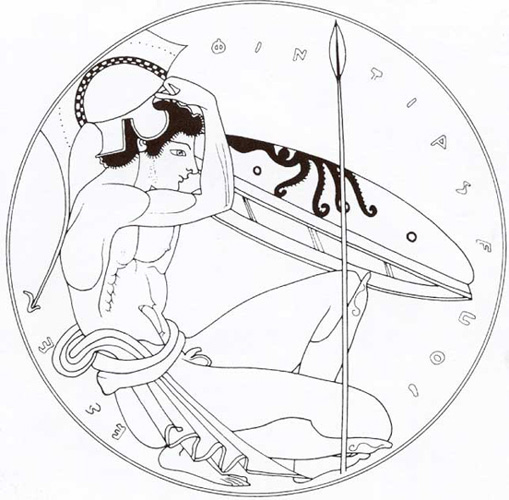
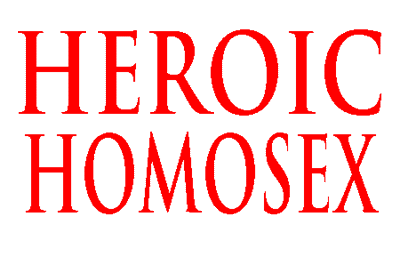


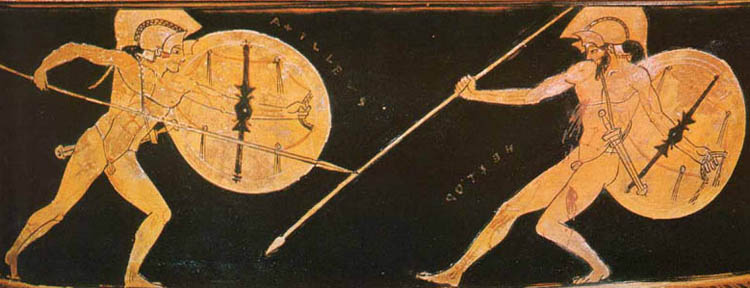

by
Bill Weintraub











by
Bill Weintraub

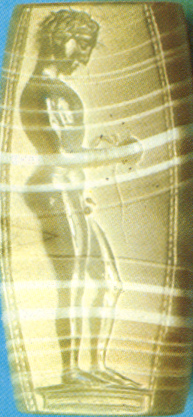
|
Polydeuces the Boxer
Castor and Polydeuces were Spartan culture heroes, known as the Dioscuri or Sons of God. Their lives, exploits, and meaning to the Spartans will be discussed more fully in The Children of Sparta.
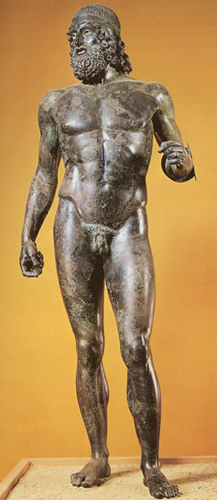
Warrior Found at Riace
Again, shield in left hand, spear in right.
One of the heroic generation who defeated the Persians.
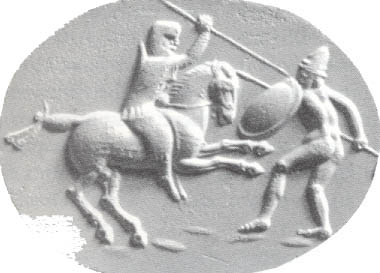
|
A Persian View
In this Persian cameo, a clothed Persian horseman fights a nude Greek hoplite, once again equipped with helmet, spear, shield, and greaves.
A striking image from the enemy camp.
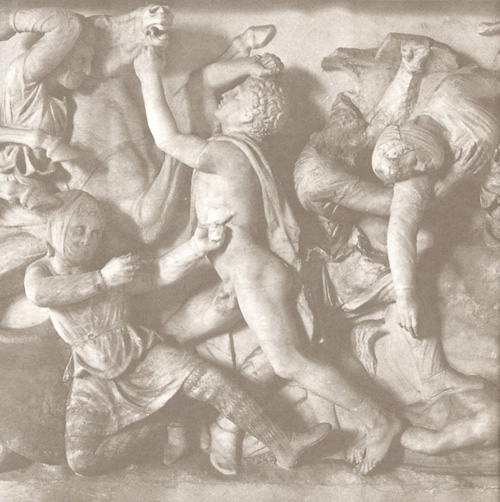
|
The Alexander Sarcophagus
Another scene from the "Alexander Sarcophagus" which we first saw in The Warrior Bond.
Here a lone nude hoplite attacks heavily clothed Persians.
When Alexander attempted cultural fusion between the Greeks and the Persians he'd conquered, nudity became a major issue.
The Persians considered nudity shameful, the Greeks thought it essential.
The Alexander Sarcophagus was commissioned by the king of Sidon, a personal friend of Alexander and Hephaestion's, to show Greeks and Persians first in discord, nude and clothed, and then in concord -- still nude and clothed.

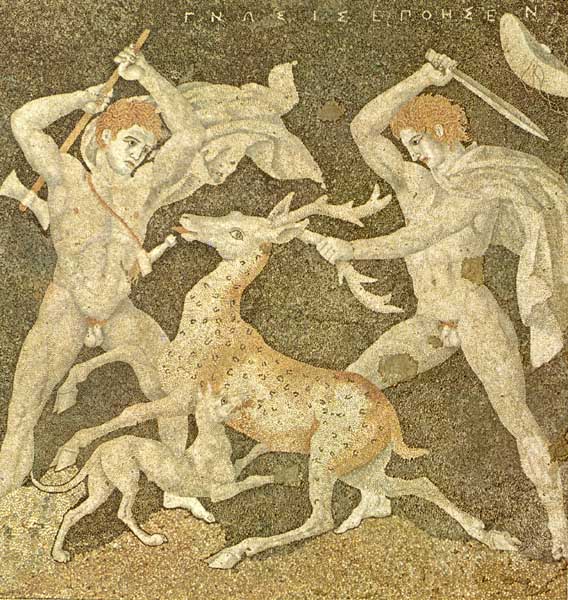
Nude hunting scenes were common among the Greeks -- and the prey is always male, in this one a stag, in another famous mosaic, a lion.
Clearly to the Greeks this was another aspect of male-male competition.

The Boeotian Confederacy
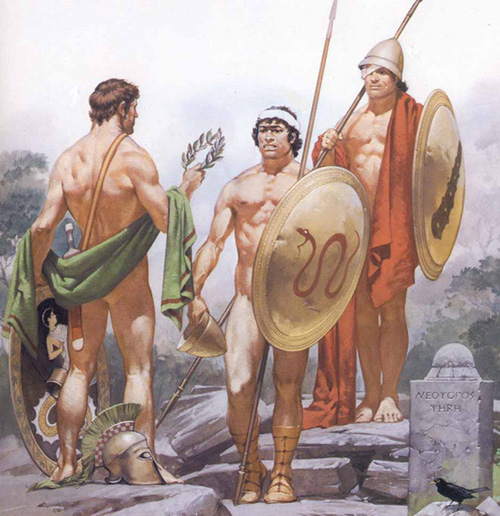
In this artist's rendering, based upon vase paintings, a Boeotian (pronounced Bay-o-tian) officer awards a hoplite a crown of laurel.
The hoplite bears a snake, the insignia of the Spartoi, on his shield, meaning that he claims descent from the culture hero Cadmus, and that he has a spear-shaped birthmark to prove it.
Cadmus killed a huge serpent belonging to Ares and sowed its teeth in the earth, from which mighty warriors, the Spartoi or "Sown Men," immediately sprang up, clashing their weapons together. After Cadmus tossed a stone among them, they began to brawl, fighting so fiercely that only five survived.
With the help of these five men, Cadmus later built the citadel of Thebes, called the Cadmea in his honor.
This sort of myth of male parthenogenesis is common in warrior cultures and often figures in initiation rites.
In the picture, the wounded warrior, waiting to receive his own honors, has the club of Herakles on his shield, identifying him as a Theban. Thebes, leading city of Boeotia and head of the Confederacy, was the birthplace of Herakles, and his lover Iolaus was said to be buried there. According to Aristotle, Theban warrior-lovers swore eternal devotion at Iolaus' tomb.
Boeotia, like Lakonia, was described by the Athenians as a place where homosex was taken for granted.
Are these two hoplites lovers? Very possibly.
More to cum dudes.

AND

Dodona Helmet
The Ultimate Warrior Art



© All material on this site Copyright 2001 - 2011 by Bill Weintraub. All rights reserved.
